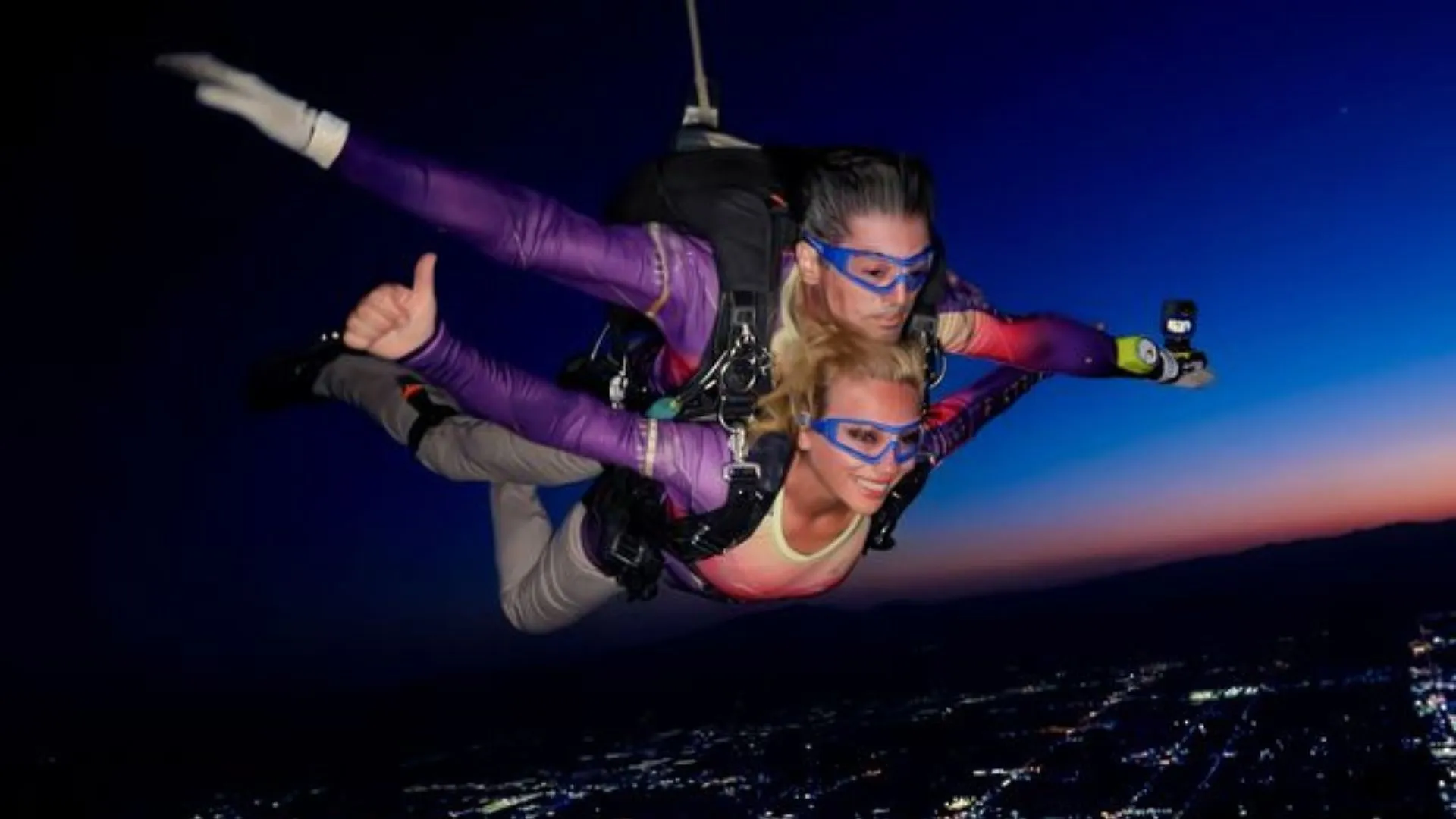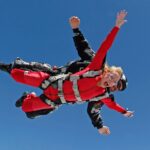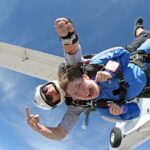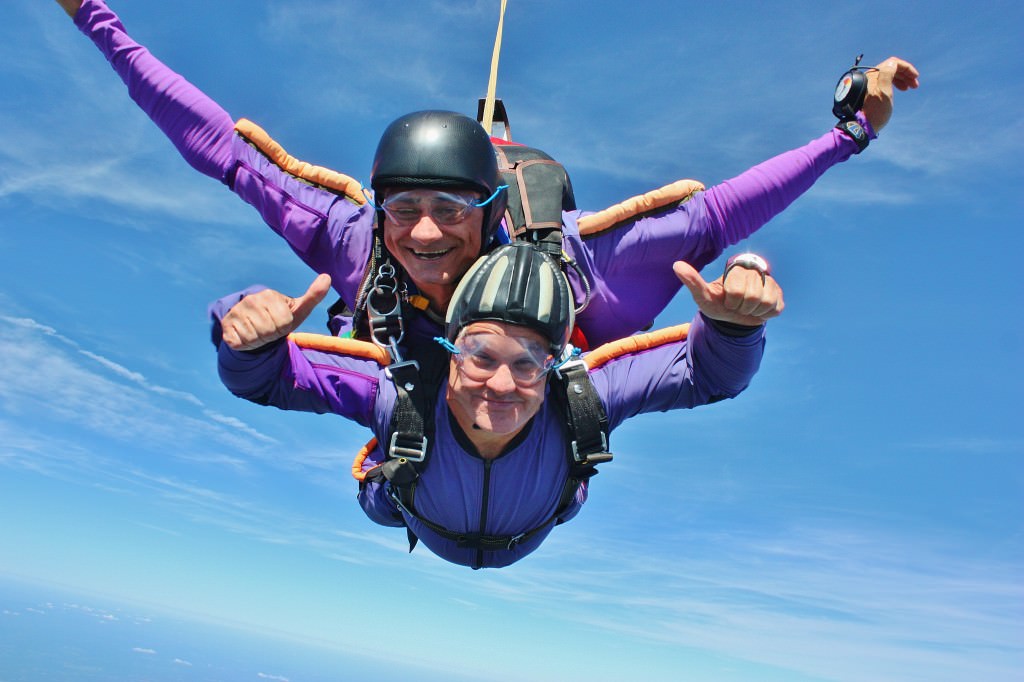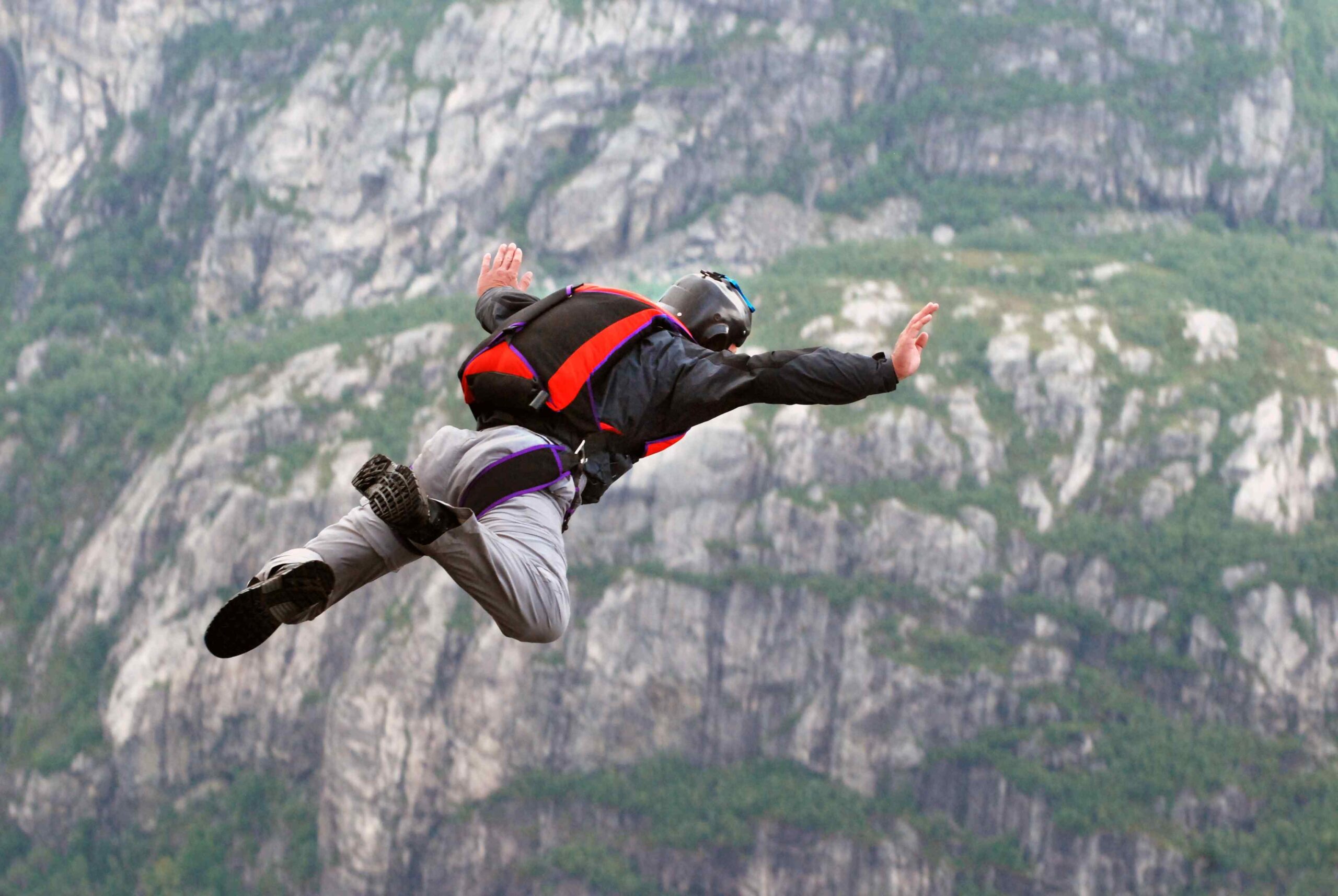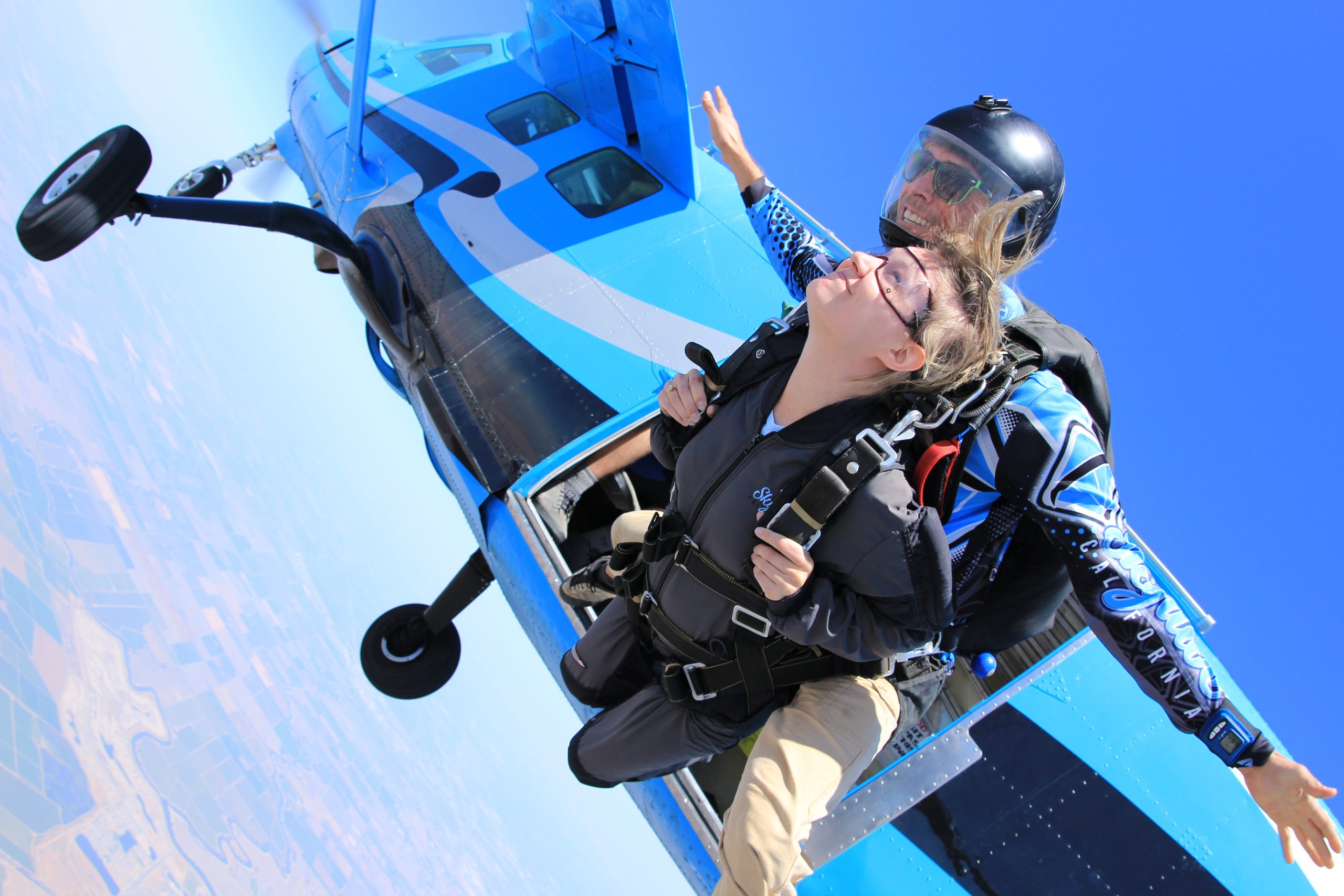Skydiving at night is not just a jump; it’s an unforgettable adventure that combines the thrill of freefall with the magic of the night sky. Imagine soaring through the air, under a blanket of stars, feeling the adrenaline rush as city lights sparkle below. For adventure seekers, beginners, tourists, and thrill-seekers, night skydiving offers a unique experience that is both exhilarating and visually breathtaking.
In this guide, we’ll explore everything you need to know about skydiving at night—from safety and timing to locations and cost—so you can plan your ultimate nocturnal adventure.
What Is Skydiving at Night?
Night skydiving is exactly what it sounds like: jumping from an aircraft after dark. Unlike traditional daytime jumps, night skydiving requires additional planning, equipment, and safety measures due to reduced visibility.
Key Differences Between Day and Night Skydiving
- Visual Experience: During the day, you see landscapes, mountains, and oceans. At night, the focus shifts to city lights, stars, and sometimes glow flares attached to the jumpers.
- Adrenaline Factor: The unknown and limited visibility often make night jumps feel even more thrilling than daytime jumps.
- Equipment: Night jumps often require illuminated suits or flares for visibility and safety.
Night skydiving with flares is especially popular because it creates a visually stunning trail in the dark sky, making the experience even more memorable.
Safety Considerations for Night Skydiving
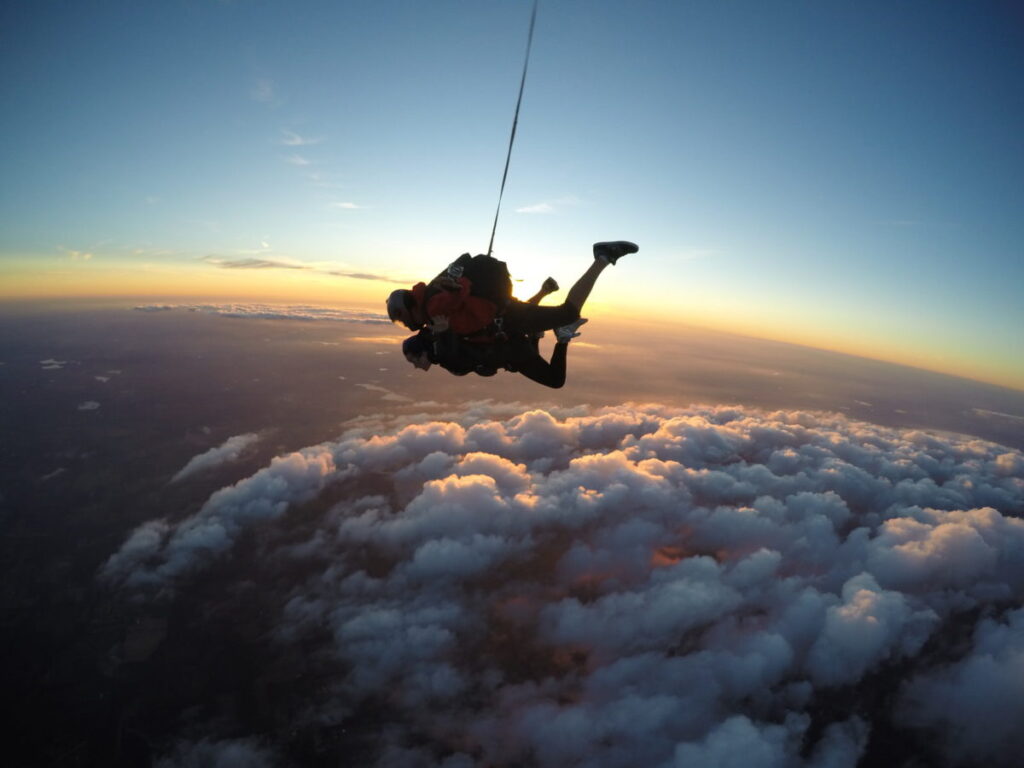
Table of Contents
Skydiving at night is safe when proper precautions are taken. Here’s what you need to know.
When Shouldn’t You Skydive?
Night skydiving isn’t suitable in the following conditions:
- Poor weather: heavy rain, strong winds, or thunderstorms.
- Low visibility: fog, cloud cover, or city light interference.
- Health restrictions: heart conditions, severe anxiety, or other medical concerns.
Equipment and Training Requirements
To jump safely at night, you’ll need:
- Special lighting or flares for visibility.
- GPS or navigation tools to track your location.
- Experienced instructors familiar with night jumps.
- Proper jump suits and safety gear designed for night conditions.
Tips for First-Time Night Jumpers
- Start with a tandem jump with a trained instructor.
- Familiarize yourself with equipment before the jump.
- Focus on breathing and staying calm to fully enjoy the experience.
Best Time and Locations for Night Skydiving
Choosing the right time and location is crucial for a safe and enjoyable night jump.
Best Time to Go Skydiving
- Clear, moonlit nights are ideal for visibility.
- Avoid nights with heavy cloud cover or strong winds.
- Summer months are preferred in most locations due to calmer weather and longer evenings.
Popular Night Skydiving Spots
- California: Known for organized night jumps with flares, especially near urban areas.
- Other countries and locations with vibrant city lights or scenic night views also offer memorable experiences.
Whether you’re in the city or near the coast, night skydiving transforms familiar landscapes into dazzling, adrenaline-packed experiences.
The Experience: What to Expect
Night skydiving is more than just the jump—it’s a full sensory experience.
Physical and Emotional Reactions
- Adrenaline Rush: Freefalling at night heightens your senses and gives a stronger thrill than daytime jumps.
- Normal Reactions: Many people experience emotional release, including crying, laughing, or screaming due to the intensity of the experience.
- Heart Rate & Excitement: Expect your heart rate to spike and your senses to be highly alert throughout the jump.
Capturing Memories
- Use professional videography or photography to capture your night jump.
- Flares and illuminated suits make for breathtaking photos and videos.
- Always confirm with your skydiving center whether recording is allowed.
Cost of Skydiving at Night
The cost of night skydiving depends on several factors, including location, equipment, and instructor fees. On average, expect higher pricing than standard daytime jumps due to the added safety measures and specialized gear.
You can learn more about the pricing details here: how much does it cost to do a parachute jump.
Day vs Night Skydiving: Key Differences
| Feature | Day Skydiving | Night Skydiving |
|---|---|---|
| Visibility | Clear landscapes, mountains, oceans | City lights, stars, flares |
| Adrenaline Factor | High, exciting | Higher due to reduced visibility and novelty |
| Equipment | Standard skydiving gear | Illuminated suits, flares, navigation tools |
| Emotional Experience | Thrilling | Intensely exhilarating, often emotional |
| Photography | Natural daylight | Glow trails, illuminated visuals, city lights |
| Ideal For | Beginners, casual jumpers | Adventure seekers, thrill-seekers, experienced jumpers |
This table makes it easier for readers to quickly understand the differences and helps Google recognize the content as structured and informative.
Pro Tips for Night Skydiving
- Book With Experienced Instructors: Night jumps require additional expertise—always go with certified instructors.
- Dress Appropriately: Wear layers to stay warm at higher altitudes, and ensure suits are equipped with reflective or glow elements.
- Check the Moon Phase: A full moon night improves visibility and enhances the experience.
- Mental Preparation: Practice calm breathing and visualization to enjoy the jump fully.
- Bring Friends or Family: Sharing the experience makes it memorable and provides extra safety support.
- Capture the Moment: Use approved cameras or ask instructors for videography options to remember your jump forever.
FAQs About Skydiving at Night
Is it possible to skydive at night?
Yes! Night skydiving is completely possible with proper equipment, training, and an experienced instructor. Specialized lighting, flares, and navigation tools make the jump safe and visually stunning.
When shouldn’t you skydive?
Avoid skydiving at night during poor weather conditions, low visibility, or if you have medical concerns such as heart problems. Strong winds, rain, or fog can make night jumps unsafe.
Is it normal to cry after skydiving?
Absolutely. The intensity, adrenaline, and emotional release from skydiving—especially at night—can lead to crying, laughing, or screaming. It’s a natural response to such an exhilarating experience.
What is the best time to go skydiving?
For night jumps, choose clear, moonlit nights with calm weather. Summer months are ideal due to longer evenings and better visibility. Timing ensures safety and maximizes the visual experience.
Final Thoughts
Skydiving at night is the ultimate adventure for thrill-seekers, beginners, and families looking for an unforgettable experience. The combination of adrenaline, visual spectacle, and emotional release makes it a must-try bucket list activity. By following safety guidelines, choosing the right locations, and understanding what to expect, you can make your night jump both safe and memorable.
Whether it’s your first jump or you’re an experienced skydiver, the stars above offer a magical backdrop that makes night skydiving a truly unique adventure. Don’t miss the chance to experience the sky like never before!
